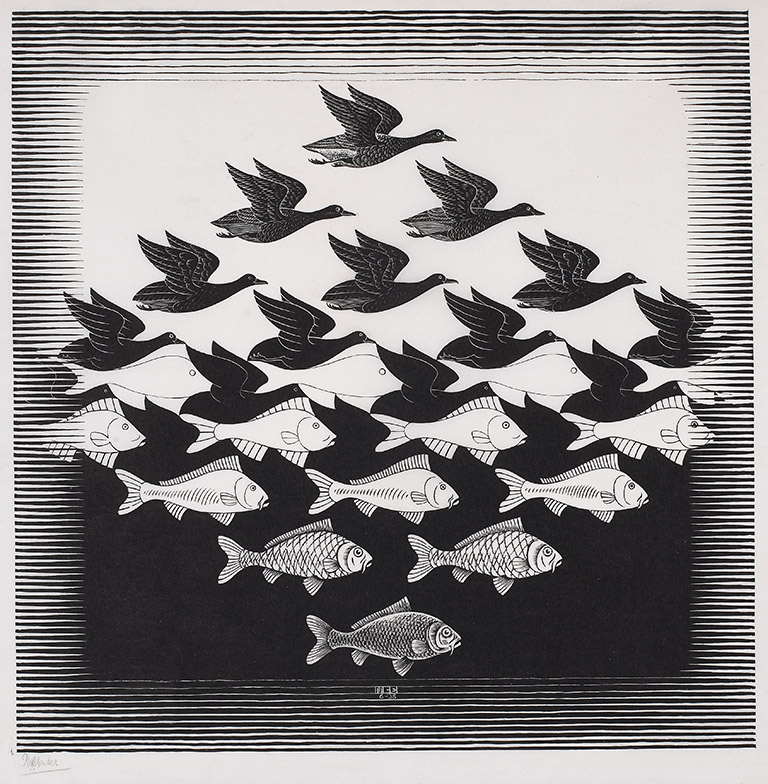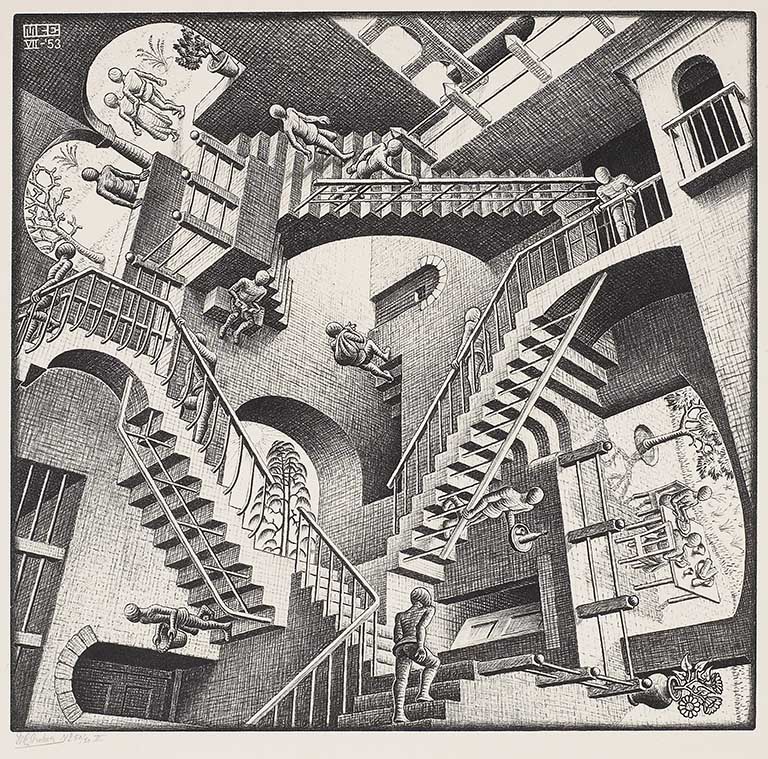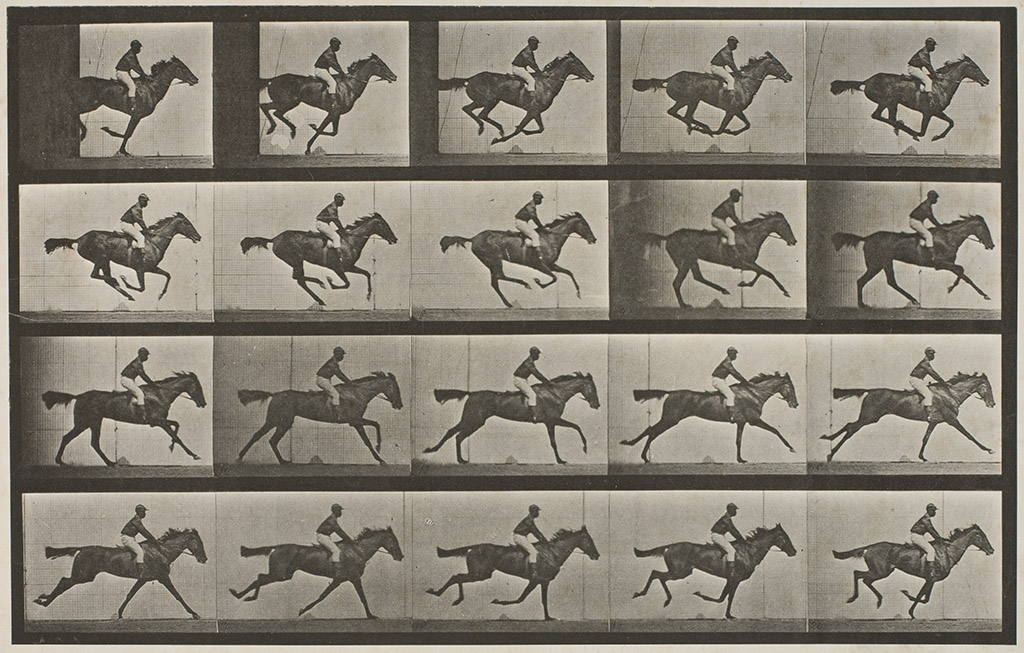M.C. Escher exhibit opens in Ottawa

M.C. Escher, Sky and Water I, June 1938, National Gallery of Canada, Ottawa, M.C. Escher’s “Sky and Water I” © 2014 The M.C. Escher Company-The Netherlands. All rights reserved. www.mcescher.com. Photo © NGC.
Some art is uniquely recognizable, even if we don’t remember who the artist was.
That’s one way to rank Maurits Cornelis Escher, or M. C. Escher, a Dutch graphic artist who lived from 1898 to 1972.
Wikipedia summarizes Escher’s work thusly:
He is known for his often mathematically inspired woodcuts, lithographs, and mezzotints. These feature impossible constructions, explorations of infinity, architecture, and tessellations.
Tessellations = “A tessellation of a flat surface is the tiling of a plane using one or more geometric shapes, called tiles, with no overlaps and no gaps. In mathematics, tessellations can be generalized to higher dimensions.”
Many find Escher’s art mesmerizing. Which is why fans will want to know about an exhibit open now through May 3rd: M.C. Escher: The Mathemagician, at Ottawa’s National Gallery of Canada. (Do not be dismayed by construction on Sussex Drive. The museum is open and the underground parking lot is accessible.)
Escher stands out in at least two memorable ways, the aforementioned tessellation patterns, and his ability to draw connections that make no sense, yet seemingly work.

M.C. Escher, Relativity, July 1953, lithograph on cream laid japan paper. Gift of George Escher, Mahone Bay, Nova Scotia, 1990, National Gallery of Canada, Ottawa. M.C. Escher’s “Relativity” © 2014 The M.C. Escher Company-The Netherlands. All rights reserved. www.mcescher.com. Photo © NGC.
Until recently, I was unaware of any connection between M. C. Escher and Canada. Well, it turns out that one of Escher’s sons, George, now lives in a suburb of urban Ottawa.
Here’s more on George Escher and his father, in a detailed article (with video) from the Ottawa Citizen’s Peter Simpson:
“He loved fish and birds, and anything else that fitted together,” says George Escher, the artist’s 88-year-old son, who moved to Canada from the Netherlands in the 1950s and now lives in Stittsville. George donated more than 200 of his father’s works to the National Gallery in the 1980s and 1990s, and many of them are in this exhibition. I ask him, what was your father like? George thinks for a moment and says simply, “He was the most down-to-earth person that I’ve ever known.”
For anyone who is interested, George Escher will give a talk about his father’s life and art as part of the annual Kathleen M. Fenwick Memorial Lecture, Thursday, March 5th at 6 pm.
Many an observer of Excher’s art has wondered how he managed it. It turns out there’s a hefty element of self-taught intricate geometry/math involved, which makes his accomplishments all the more interesting for those who like those subjects, or their practical applications.
Some such geometry is alluded to in this whimsical homage to Escher from the National Film Board
The Escher exhibition is the headliner, but it is paired with something of similar interest:
Clocks for Seeing: Photography, Time and Motion considers the relationship between time and photography through a selection of historical and contemporary photographs that encompass practices ranging from science to art.

Eadweard Muybridge, “Annie G.” galloping, c. June 1884 11 May 1886, printed November 1887, collotype, Gift of Dr. Robert W. Crook, Ottawa, 1981. National Gallery of Canada, Ottawa. Photo © NGC. Used by permission.
If that’s not enough Escher for you, or if you can’t get to the museum show, here’s a a link to the Escher Museum (Escher in Het Paleis, Netherlands). And an hour-long bio-doc, Metamorphose 1898-1972 M. C. Escher. It explains the strong Italian influences in his work, stemming from the 13 happy years he spent in that part of the world.
https://www.youtube.com/watch?v=GCiqqszGT6Y
Tags: art, canada, design, George Escher, M.C. Escher, math, National gallery, tourism







